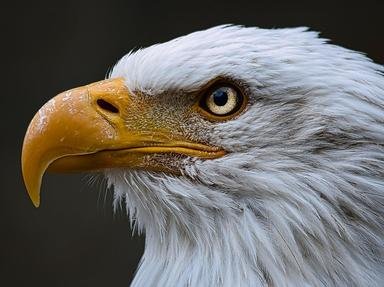Quiz Answer Key and Fun Facts
1. These black birds have bluish iridescent heads, yellow eyes and long tails. They would descend on the feeder in a noisy flock, chasing every other bird away and gulping down seed till it seemed they were all we were feeding. Their calls sounded like a rusty hinge. What are they?
2. These little year-round birds are mostly brown with a lovely splash of light red over the head and chest, though some are yellowish. The females tend to be duller. I had never seen them out in the country, but they love our feeder in town. What are they?
3. This woodpecker loves our suet. It has a red head and a bit of red on its belly, and the usual speckled black and white wings. It's about the size of a downy woodpecker, certainly not like a big pileated woodpecker. What is it?
4. This little bird has a black cap and says its name when it gives its call. We see it in winter but it doesn't visit in summer. What is it?
5. This medium-sized black bird has tiny white speckles on its feathers in winter and a more iridescent plumage in summer. All the birds are descended from a deliberate release in New York City. They gather in flocks like the grackle but fortunately haven't found our feeder in great numbers, though some people complain. What is it?
6. This big red bird with the red crest and the black mask around his beak can hardly compete with the little birds, because he needs to balance on the perch that's really too small for him. But we're glad he manages. His mate is a much duller red. Who is he?
7. This bird is almost too big to fit on the feeder, but he tries. He's blue and white, with black trim and a bit of a crest, and a raucous voice. What is he?
8. This grayish brown bird prefers to waddle around on the ground under the feeder, picking up what other birds have dropped, announcing its presence before landing on the ground with its familiar "coo-ah coo coo coo." What is it?
9. This little blue-gray crested visitor is about the size of a chickadee, and is related to it. What is it?
10. This unwelcome visitor to our bird feeder (notice I said "visitor," not "bird") has a long fluffy gray tail and a furry gray body. It loves seeds and nuts as much as birds do. It took some work to finally exclude it from the feeder. What is it?
Source: Author
littlepup
This quiz was reviewed by FunTrivia editor
guitargoddess before going online.
Any errors found in FunTrivia content are routinely corrected through our feedback system.

